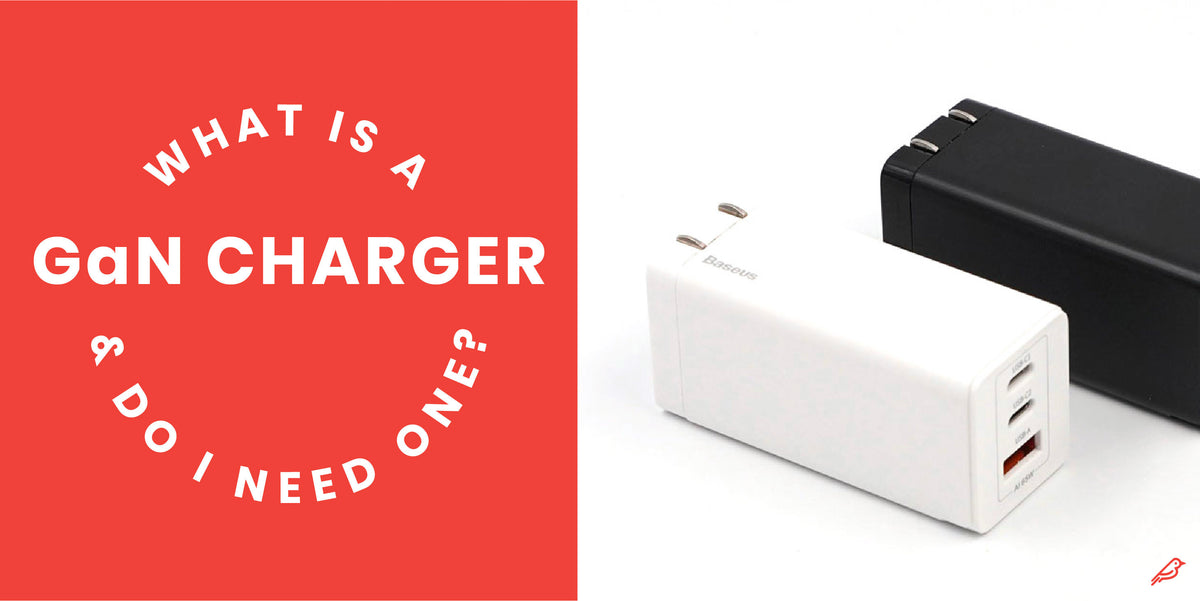Gallium Nitride (GaN) chargers are growing in popularity in the premium electronics space. These chargers are a modern alternative to the traditional silicon and produce smaller, more efficient chargers. But how do GaN chargers work? And would one really benefit you?
What Is Gallium Nitride?
Gallium nitride is a semiconductor material that rose to prominence in the 1990s through the manufacture of LEDs. GaN was used to create the first white LEDs, blue lasers, and full color LED displays you could see in daylight. In Blu-ray DVD players, GaN produces the blue light that reads the data from the DVD.
It appears GaN will soon replace silicon in many areas. Silicon manufacturers have worked tirelessly for decades to improve silicon-based transistors. According to Moore’s Law (named after the co-founder of Fairchild Semiconductor and, later, the CEO of Intel, Gordon Moore), the number of transistors in an integrated silicon circuit doubles about every two years.
This observation was made in 1965, and it largely rang true for the last 50 years. In 2010, though, semiconductor advancement slowed below this pace for the first time. Many analysts (and Moore himself) predict Moore’s Law will be obsolete by 2025.
Production of GaN transistors ramped up in 2006. Improved manufacturing processes mean GaN transistors can be manufactured in the same facilities as the silicon type. This keeps costs down and encourages more silicon manufacturers to use GaN to produce transistors instead.
Why Is Gallium Nitride Superior to Silicon?
The benefits of GaN compared to silicon boil down to power efficiency. As GaN Systems, a manufacturer that specializes in gallium nitride, explained:
“All semiconductor materials have what is called a band gap. This is an energy range in a solid where no electrons can exist. Simply put, a bandgap is related to how well a solid material can conduct electricity.
Gallium nitride has a 3.4 eV bandgap, compared to silicon’s 1.12 eV band gap. Gallium nitride’s wider bandgap means it can sustain higher voltages and higher temperatures than silicon.”
Efficient Power Conversion Corporation, another GaN manufacturer, stated that GaN is capable of conducting electrons 1,000 times more efficiently than silicon, and with lower manufacturing costs, to boot.
A higher bandgap efficiency means the current can pass through a GaN chip faster than a silicon one. This could result in faster processing capabilities in the future. Simply put, chips made of GaN will be faster, smaller, more power-efficient, and (eventually) cheaper than those made of silicon.
What makes a Gallium Nitride Charger better?
Size:
First off, GaN chargers are physically smaller than current chargers. So they take up less space on your desk or in your backpack. This is because gallium nitride chargers don’t require as many components as traditional silicon chargers.
Energy Transfer:
Gallium Nitride is able to conduct more high voltage charging over time than a silicon transistor. GaN chargers are not only more efficient at transferring current, but this also means less energy is lost to heat. So, more energy goes to whatever you’re trying to charge. When components are more efficient at passing energy to your devices, you generally require less of them.
As a result, GaN power bricks and chargers will be noticeably smaller when the technology becomes more widespread. There are other benefits, too, such as a higher switching frequency that enables faster wireless power transfer, and bigger “air gaps” between the charger and device.
Price:
At present, GaN semiconductors generally cost more than the silicon kind. However, due to improved efficiency, there’s a reduced reliance on additional materials, like heatsinks, filters, and circuit elements. One manufacturer estimates cost savings of 10 to 20 percent in this area.
At scale there is another benefit to GaN chargers which is the eventual saving of energy charges. However, you shouldn’t expect to see a huge change with relatively low-power devices, like laptops and smartphones, though.
Where You Can Buy a GaN Wall Charger Today
Although they’re not yet widespread, you can buy chargers that use GaN tech from many common online retailers. A quick search on Amazon shows a multitude of chargers from a myriad of companies with varying reviews.
The good news is none of these chargers are particularly expensive. The 61-watt RAVPower retails for around $40, and Sanho has announced a price bracket of between $50 to $100 for the retail version of their 100-watt charger.
For reference, a brand-new Apple 96-watt USB-C power adapter for your Macbook Pro retails for $79, and it’s considerably larger and heavier than most chargers. .
The Chargers of the Future
It is unlikely you will see many GaN chargers in the market until large hardware manufacturers, like Apple and Samsung, start including them with their new computers and smartphones.
If you do decide to start enjoying the charging benefits of GaN now, you can do so without paying the premium normally associated with cutting-edge technology.

